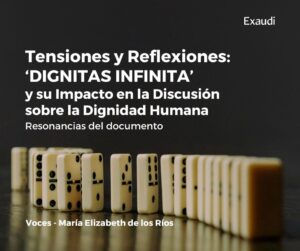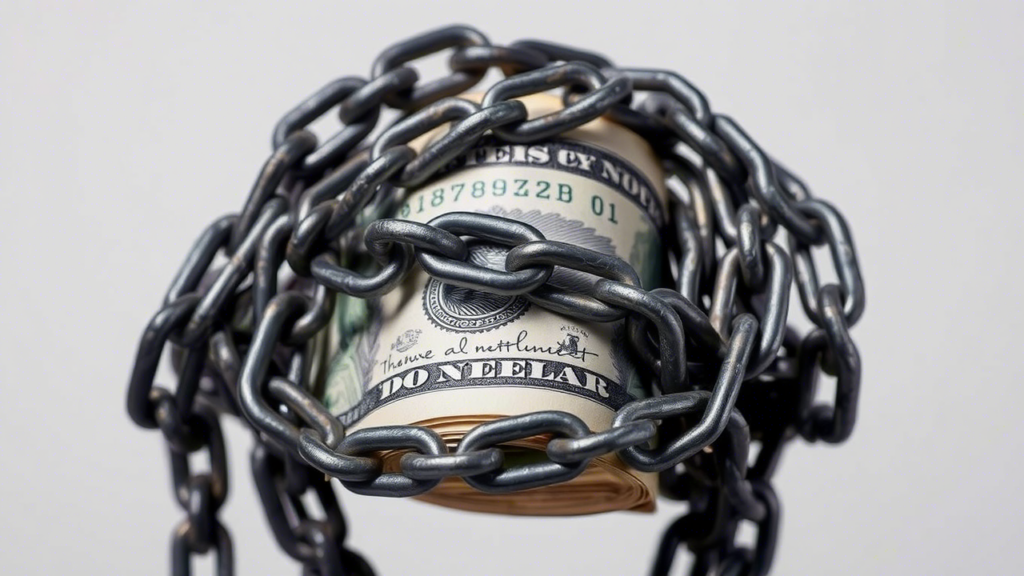Tensions and Reflections: ‘Dignitas Infinita’ and its Impact on the Discussion on Human Dignity
Document resonances

A week after seeing the light, the declaration Dignitas Infinita, issued by Cardinal Víctor Manuel Fernández from the Congregation for the Doctrine of the Faith, has caused countless motions, as well as some discomfort, however, it is, perhaps, one of the most illustrative documents of the signs of the times that invites us – and demands – the method of the Social Doctrine of the Church, namely: see, judge and act.
Divided into two large parts: one that responds to the philosophical, anthropological, and theological foundations of the notion of human dignity and a second that describes thirteen attacks against it, one of the greatest riches of the text is found in its references and quotes that include a continuity in the line of thought of the predecessors of Pope Francis that proves that the issue of defending the dignity of all people has always been a cause of great concern and sharp denunciation for the Church, as Cardinal Fernández states in the paragraph sixth of the introduction.
Given the criticism focused on the reductionism and simplicity with which it addresses the thirteen violations of human dignity, we would have to respond that they are a product of the ideological myopia that permeates the reading, since in each paragraph, there are endless references that they sufficiently realize that each topic, and many more, have always been at the center of the discussion and that there is much to study about each one.
I would like to focus these lines on three resonances that the document has had for me: the one referring to the very notion of dignity and its grammatical twist, the necessary relationship between this and human rights that has given rise to the purest disembodied positivism and, a third, which attempts to recover not what is manifest, but what is implicit, of the notion of dignity in the thirteen violations of it that the document mentions.
Regarding the first, it must be said that although the foundation given for the dignity of the person lies in human nature as a subsistent and relational being, the reflection can go even further, by affirming that the same subsistence referred to the substance to which Boethius alludes in his definition of person (number 9 of the declaration) which, in turn, takes from Aristotle, implies thinking that dignity as a substance informs the being of the person not accidentally but precisely substantially. .
The above means that human dignity is already a substance in itself and does not depend on anything else to exist. This statement entails a radical turn at a grammatical level that leads to thinking that dignity is a noun in itself with full and absolute meaning and not an adjective that is added to another noun, which is “person.” The person then comes after saying “dignity”, in such a way that, dignity comes first than the person and only because it is so, the person can be “worthy” but not as an adjective but as a noun.
This shift from dignity as an adjective to dignity as a noun is what makes it possible for it to be not an accidental notion, but a substantial one and for this reason, as the declaration states, there is no gain or loss, no more or less is done, It does not depend on whether someone gives it or takes it away, much less whether it is recognized or not.
The latter about recognition is what has given rise to the debate between natural law and positivism, which has resulted in a notion of human dignity dependent on human rights, their declaration and recognition. This is a fallacy that must be exposed. I now turn, therefore, to the second reflection.
The relationship between human rights and human dignity is a non-dependent one that implies the fundamental premise of the ontological character of the first and axiological of the second.
It is, therefore, human dignity that gives rise to the formulation of human rights and their consequent recognition and protection, but even if these were not promulgated, systematized and declared, they would implicitly have to be respected, since they emanate from ontological dignity of all human beings. Thus, respect for human rights does not depend on their positivist formulation, but on the existence of human dignity. This is the source of human rights and not these.
Finally, a third reflection is what would mean, for some, that, given that there are these thirteen violations of human dignity, this one exists, that is to say, an attempt is made to prove human dignity through the effects caused by its damage in certain scenarios and, furthermore, an attempt is made to prove that, given that there is the possibility of harm, there is a duty to protect. As if damage were an occasion for the affirmation of dignity to emerge.
This inductive path is unsuccessful, since dignity does not only appear when it is damaged, but permeates the entire time and space that a person occupies in history; in yours and in that of humanity. The latter is more important, since, when the document states that it is “infinite” it refers to the dignity of each man in all and that of all in each man, as Paul VI did in Populorum Progressio (numeral 14). Thus, damage to the dignity of one person implies damage to the dignity of all, since we all, equally, share that substantiality on which our particular being rests in universal history. Hence, the prevailing urgency to recognize the damage perpetrated to repair it and, above all, prevent it.
However, the document focuses its gaze on the people who are victims of violations. Traditionally, justice has treated these as the main subjects of reparation, thus, from other conceptions of justice such as transitional or restorative justice, the victim and the perpetrator have as much weight, since both have suffered harm.
The victim has suffered obvious damage that is unquestionable, however, so has the perpetrator. These thirteen violations and many others are situations that overshadow the possibility of the person perceiving themselves as worthy and free. When this happens, it is almost inevitable that they also perceive others as lacking value and are capable of depriving them of their freedom too. Thus, the perpetrator is also someone who has suffered the deprivation of social, family, economic, etc. conditions that allow him to awaken his conscience to recognize his own dignity and with it, recognize that of others.
Thus, it is how the thirteen violations of human dignity that the document presents emphasizes that they are all situations and circumstances that threaten the freedom of the person, a sine qua non condition, for the person to be recognized as a substance in itself capable of freedom and takes ownership of it so that it directs its actions in order to do good.
With this, the affirmation of the dignity of the victims as well as the perpetrators becomes visible and challenges us to act both in favor of the former and the latter in the understanding that both, like all human beings, are worthy independently and, as the document states, beyond all circumstances.
Briefly, I have tried to present some echoes that the declaration has provoked in me with the intention of deepening the importance that, today, in the complex world we live in, the centrality of human dignity as the guiding axis of actions and decisions that we must take on the degradation of the human being coming from pragmatic, utilitarian currents that insist on erasing its value and positioning it as just another thing among things.
 (EN)
(EN)
 (ES)
(ES)
 (IT)
(IT)






